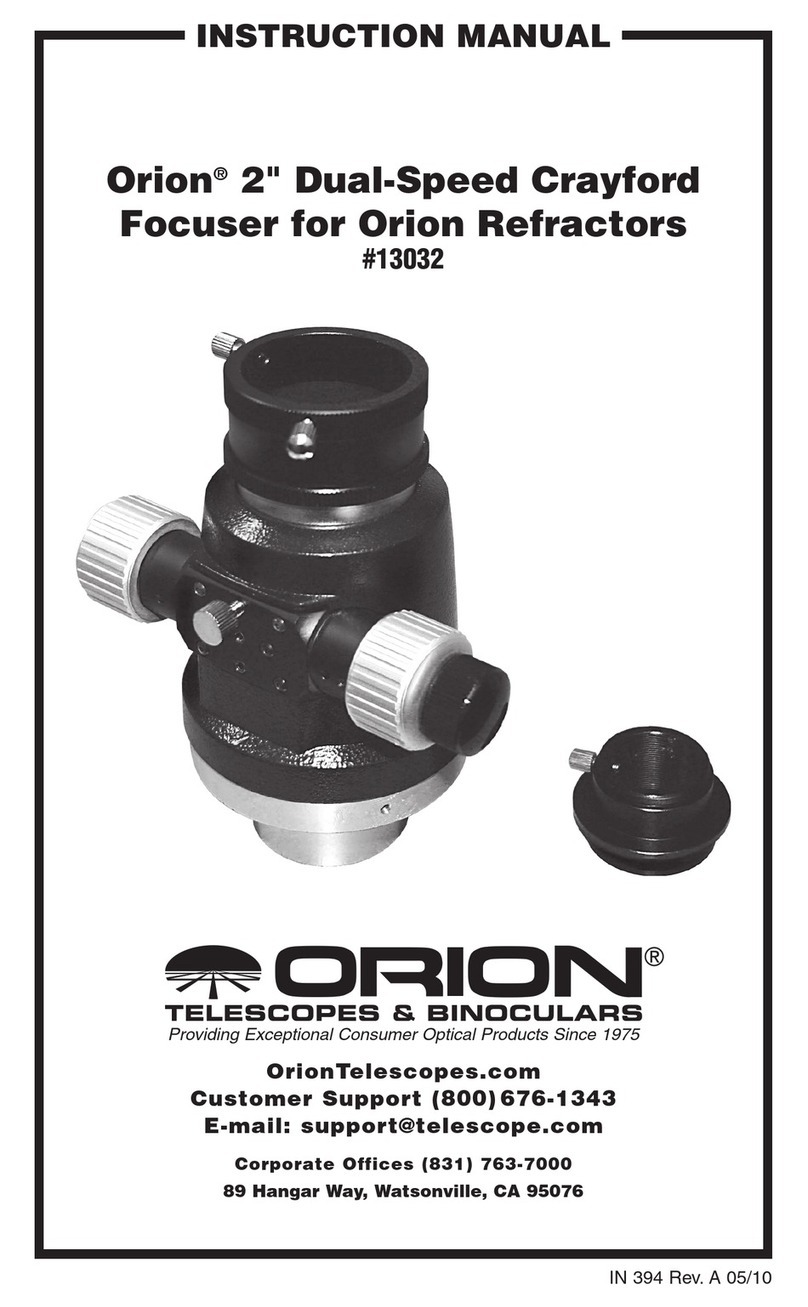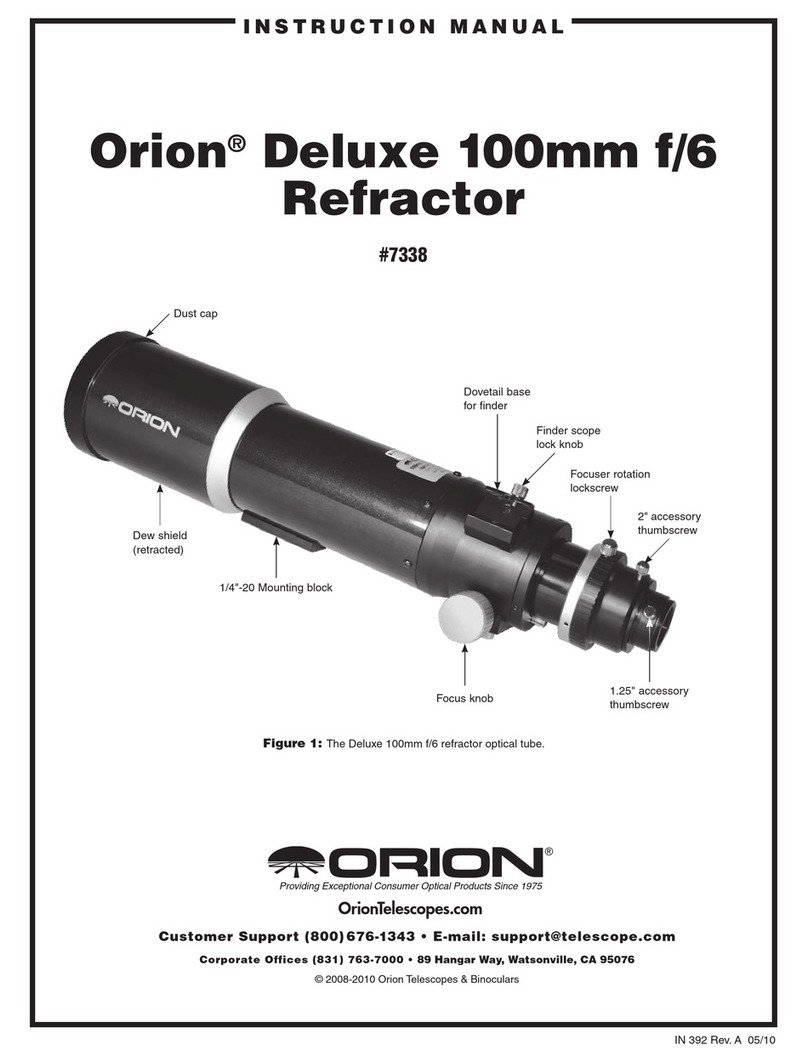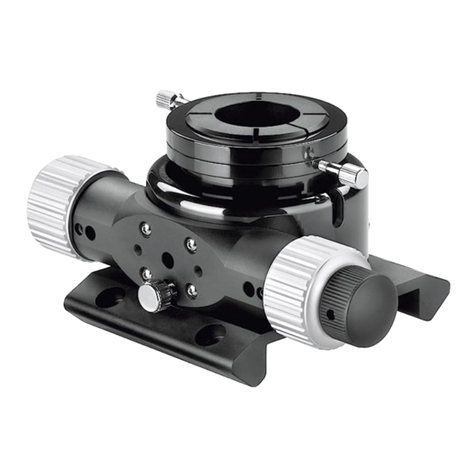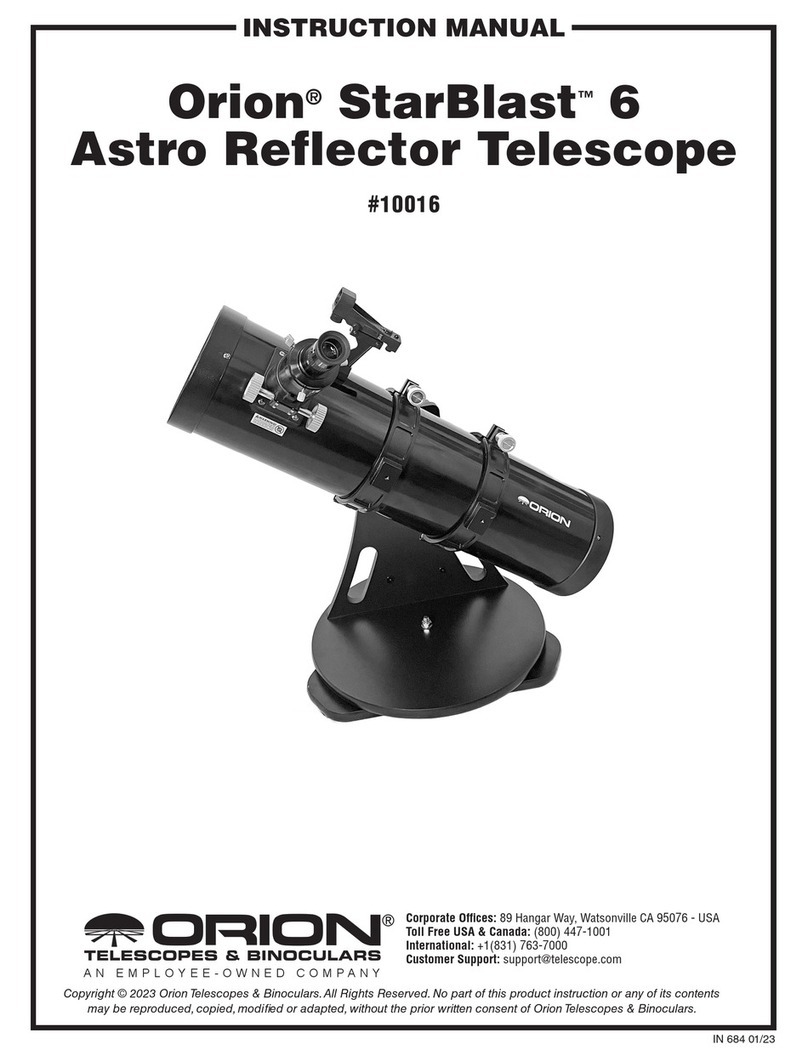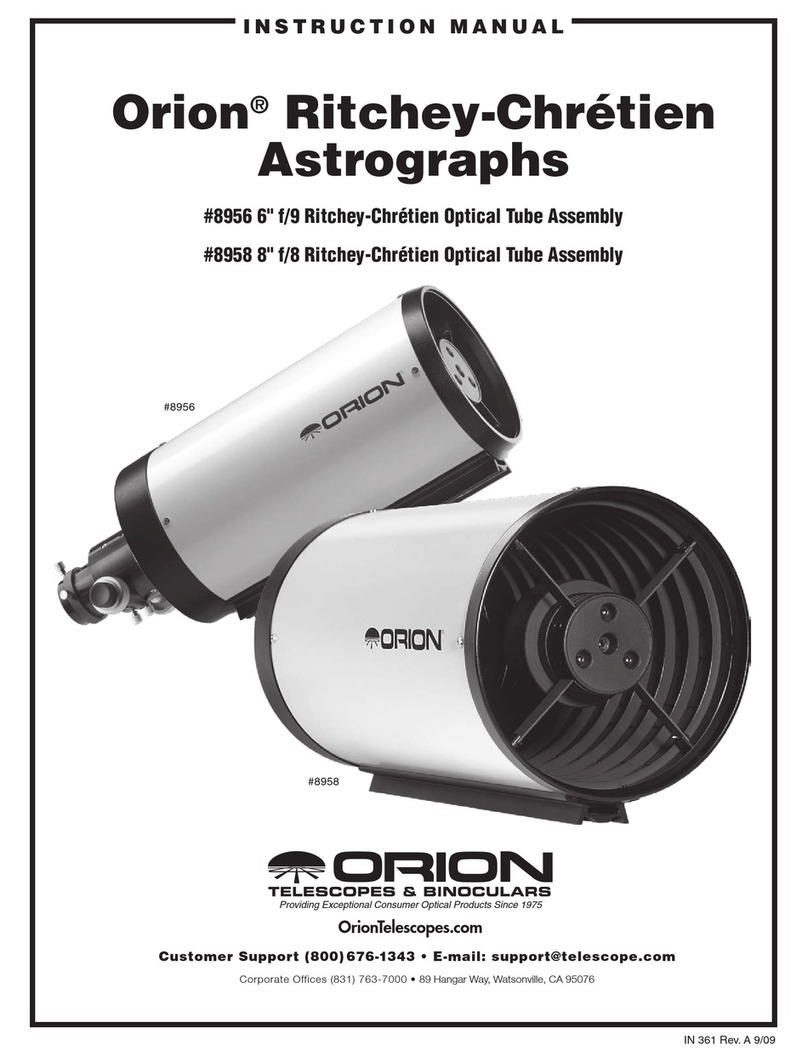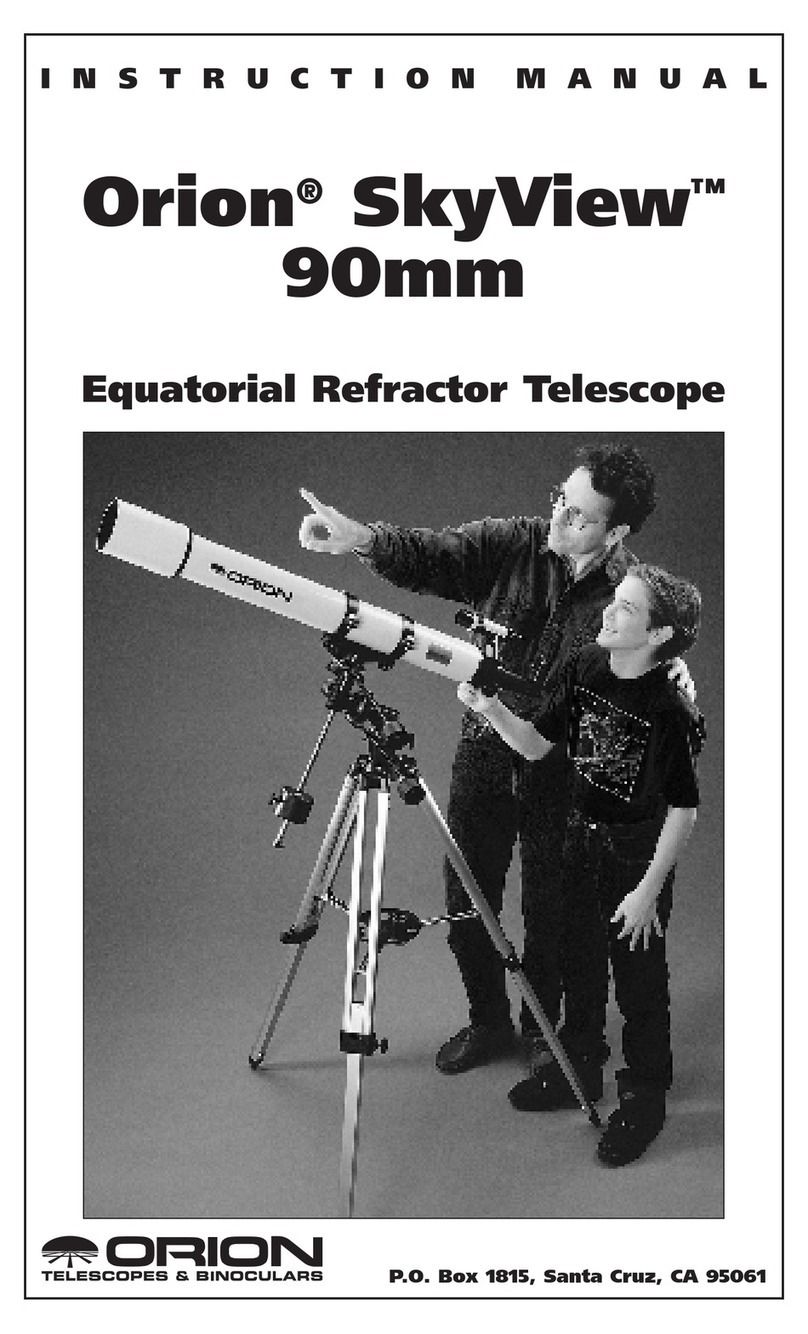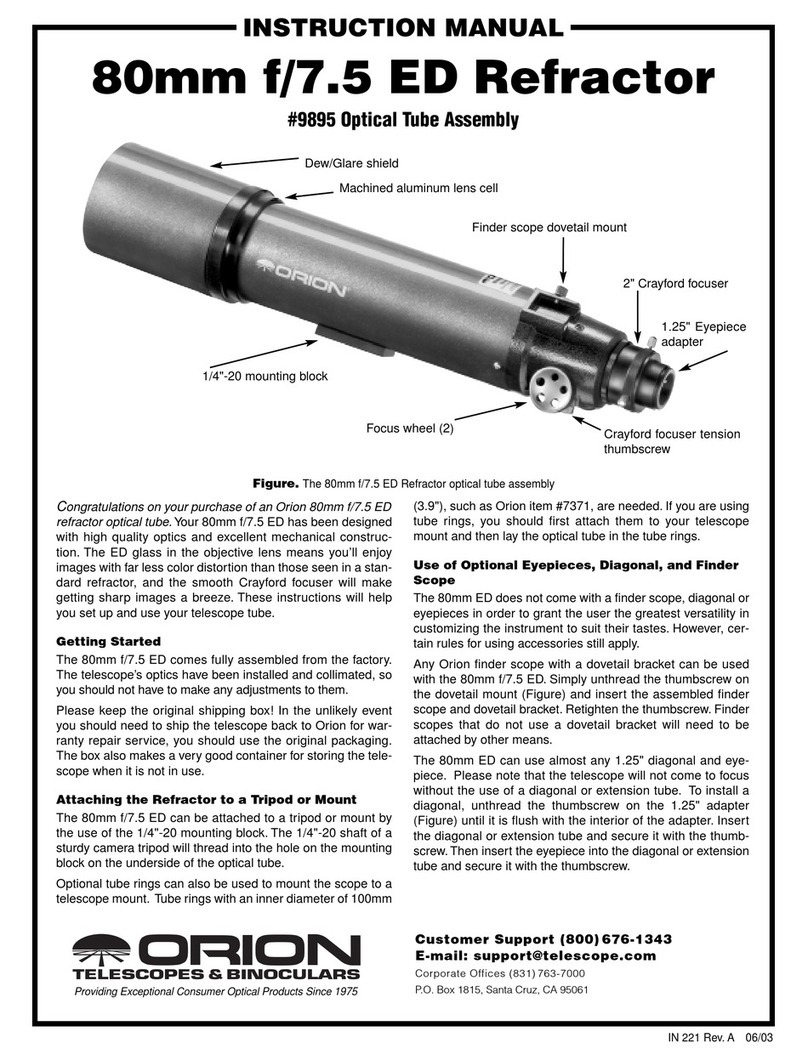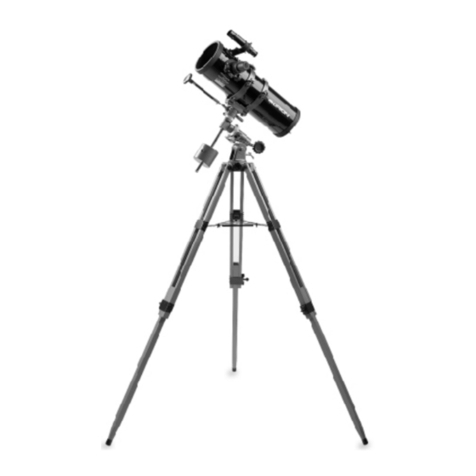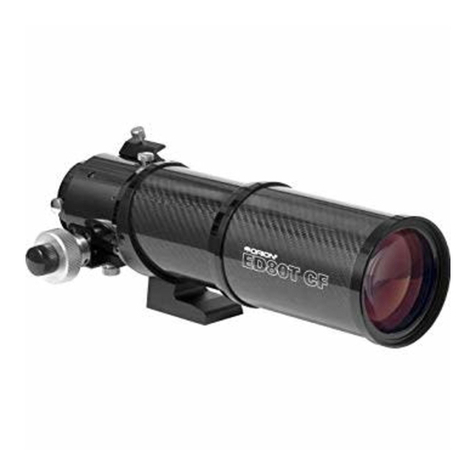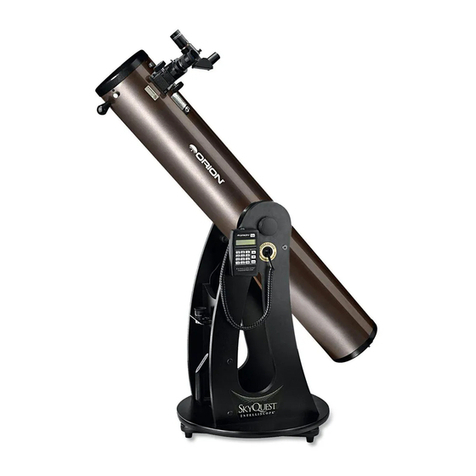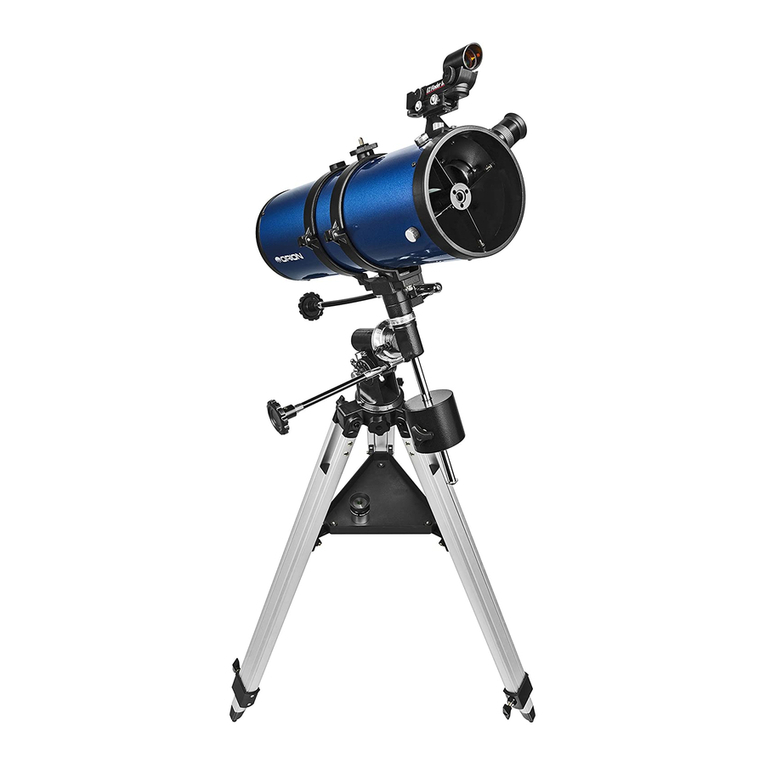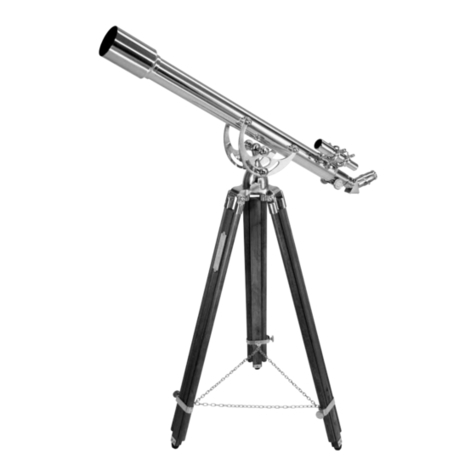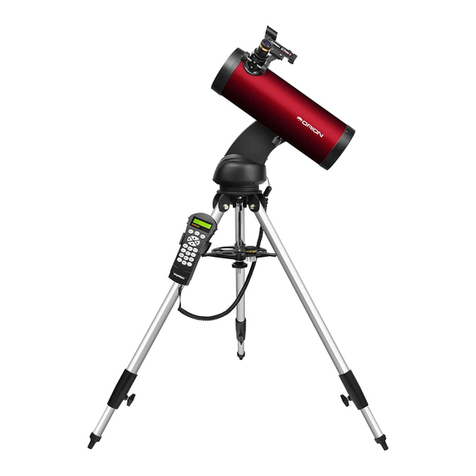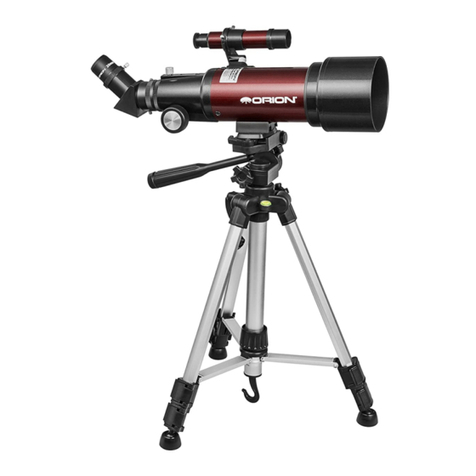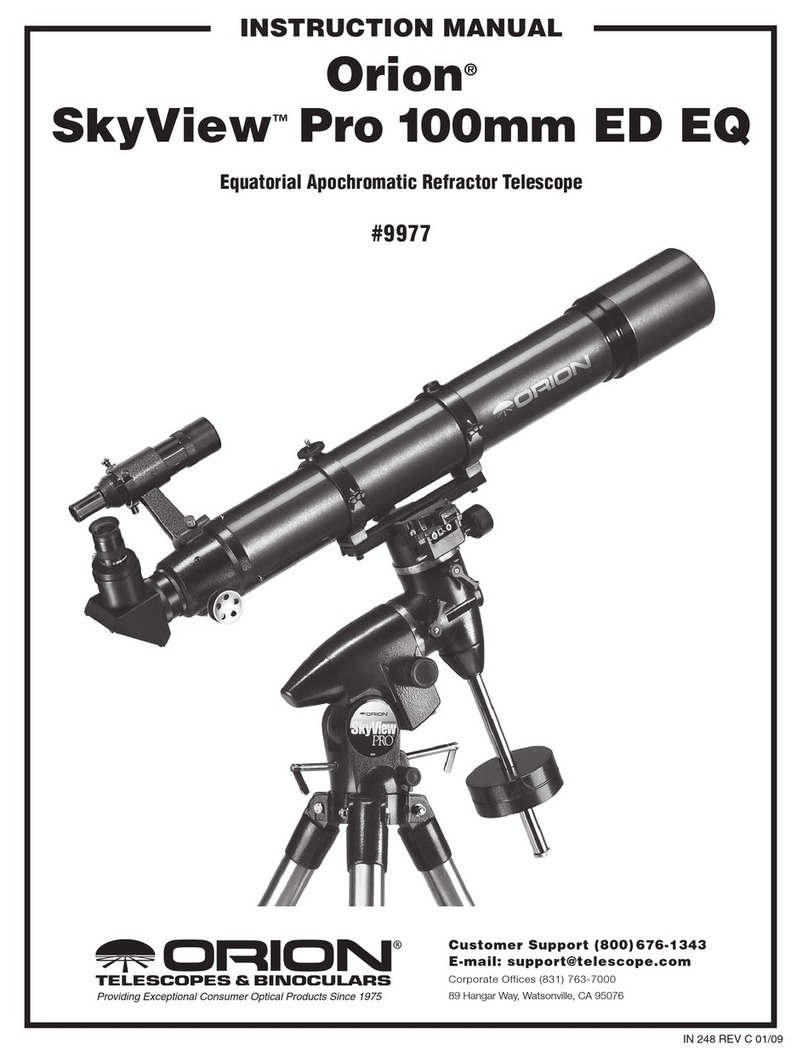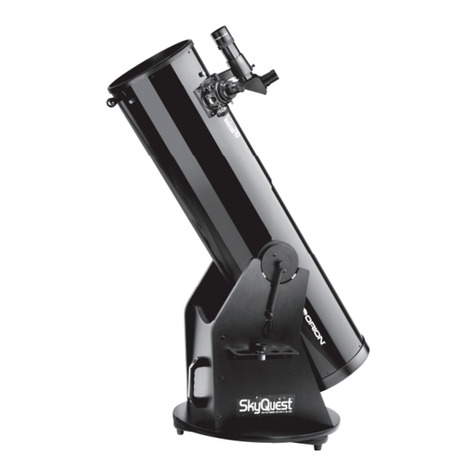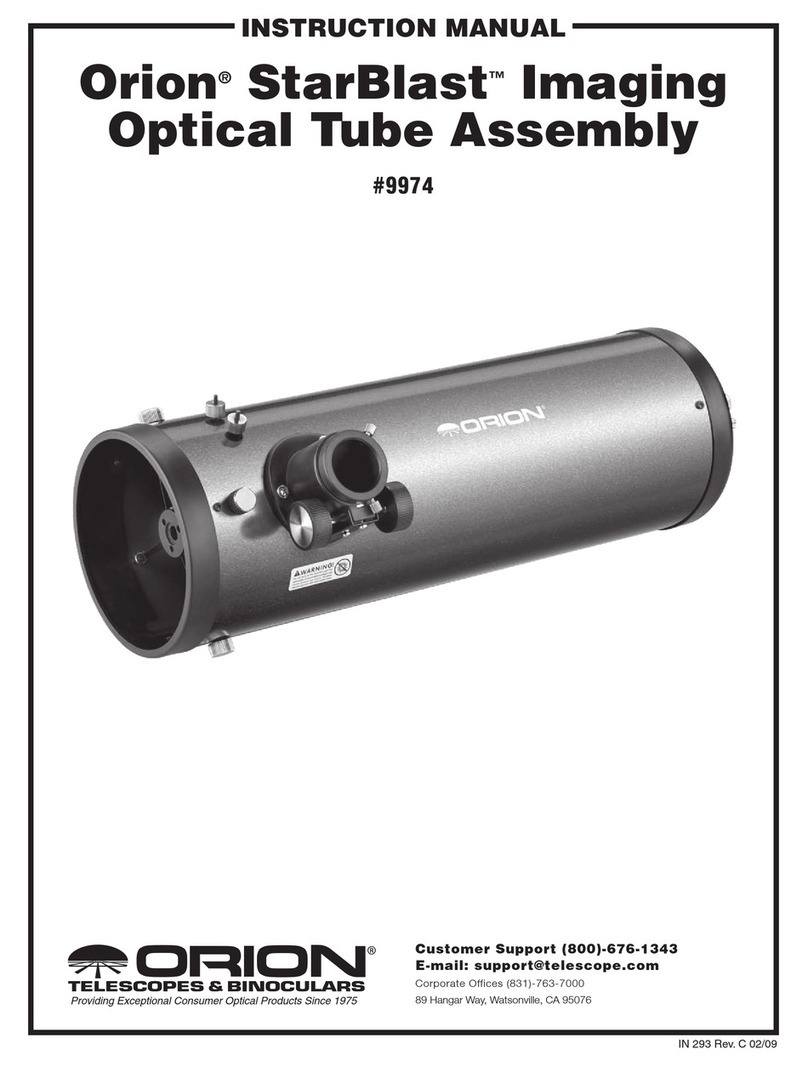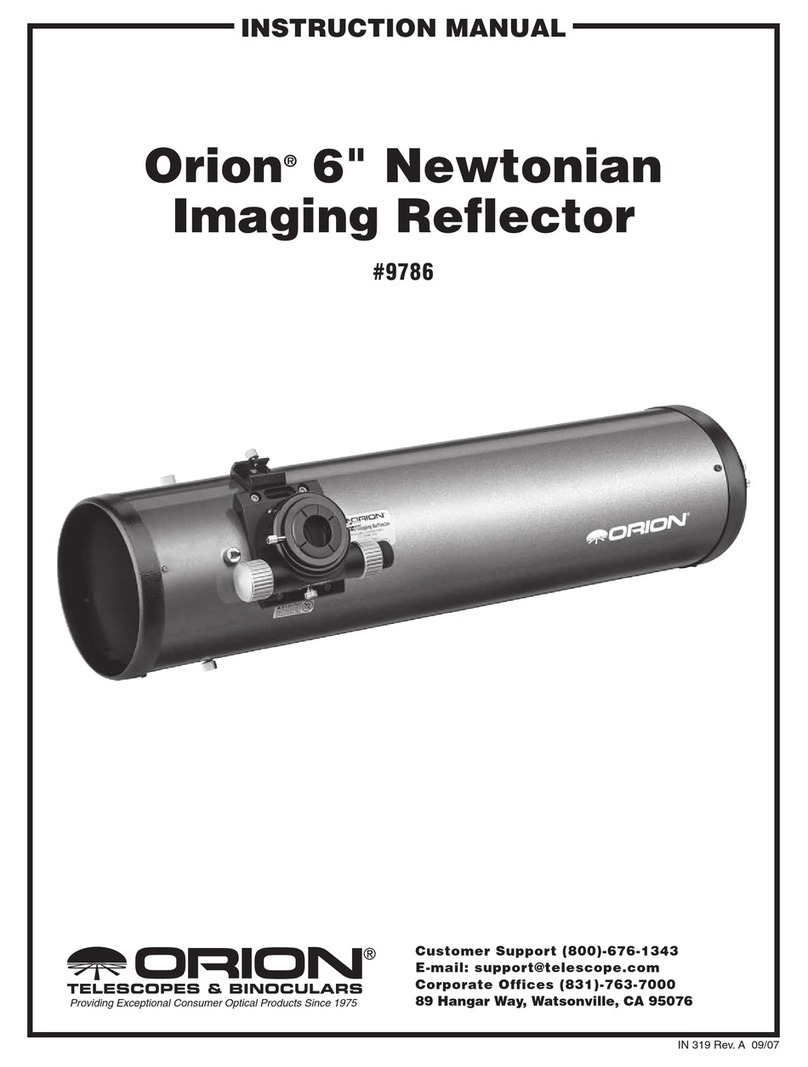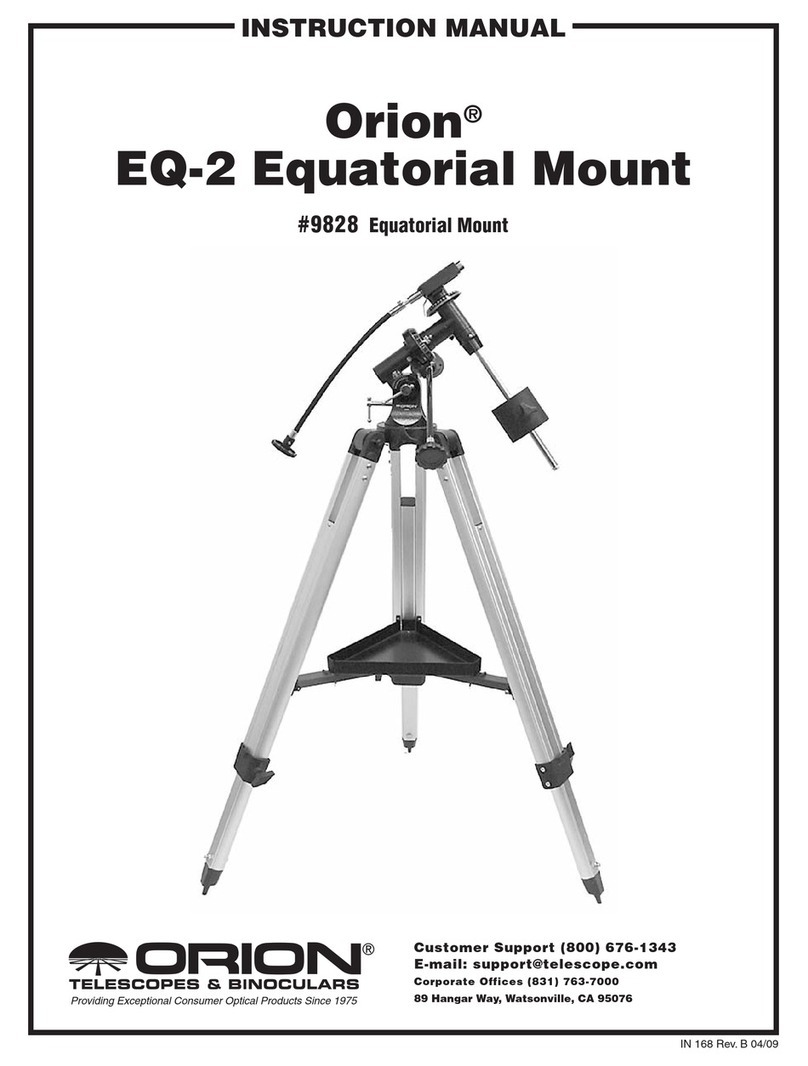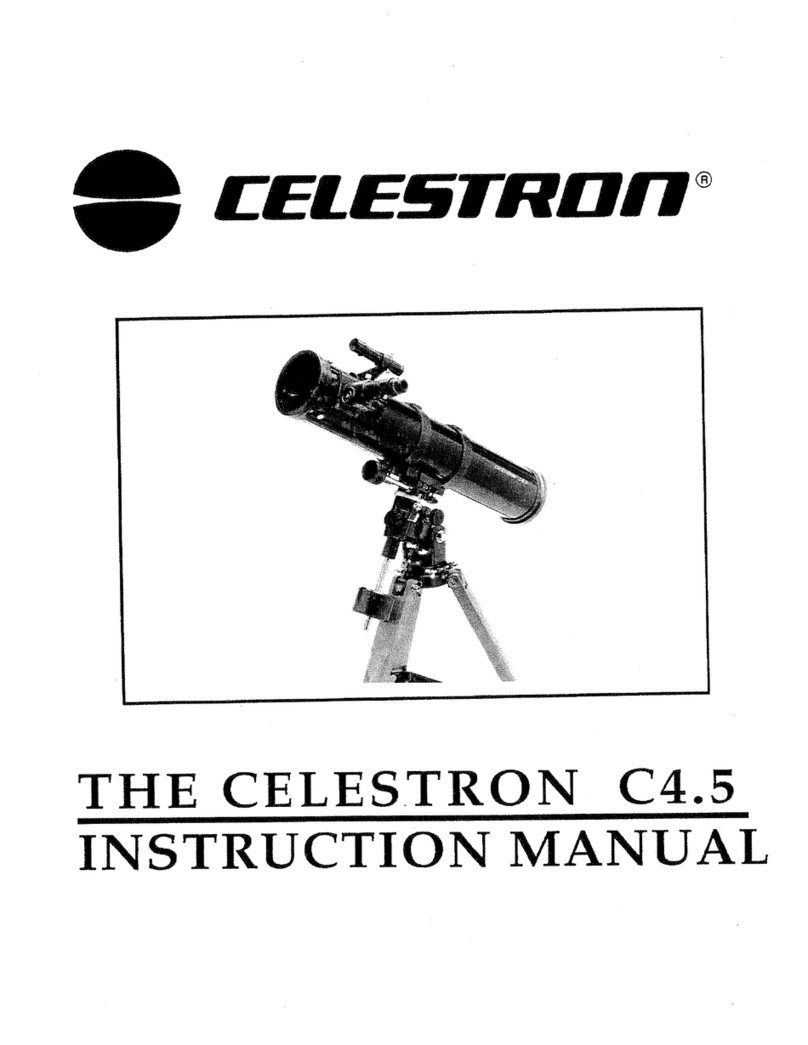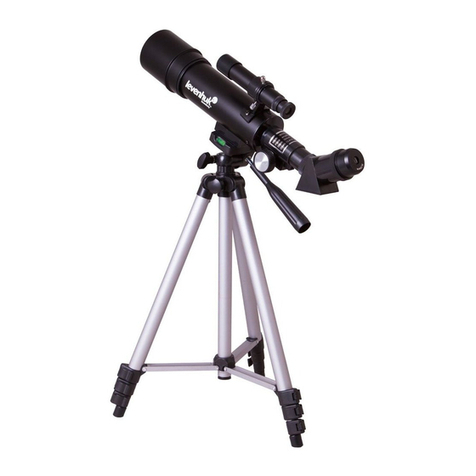
4
2"-to-1.25" step-down adapter is also equipped with a rotat-
ing brass compression system to prevent scoring of your 1.25"
accessory. The telescope must be used with either a diagonal
or extension tube in order for an eyepiece to reach focus. In
most cases, you will be using a 90° star diagonal for visual use
with an eyepiece. A camera will also likely require a 2" exten-
sion adapter to reach focus. An optional eld attener can be
used instead of an extension adapter, and is recommended for
imaging with cameras having an APS-C sized sensor or larger.
To attach a 1.25" diagonal to your telescope:
1. Rotate the collar on the 1.25" adapter counter-clockwise
to loosen the compression system.
2. Remove the dust cap from the 1.25" eyepiece adapter.
3. Insert the barrel of your diagonal or extension tube into
the 1.25" eyepiece adapter.
4. Secure the barrel in place by rmly rotating the collar
clockwise on the 1.25" eyepiece adapter to engage the
compression locks
To attach a 2" diagonal, or extension tube to your telescope:
1. Loosen the security thumbscrew on the focuser’s
2" accessory collar and rotate the 2" collar counter-
clockwise to unlock the compression system.
2. Remove the 1.25" eyepiece adapter.
3. Insert the barrel of your diagonal or extension tube into
the 2" accessory collar.
4. Secure the barrel in place by rmly rotating the
compression collar clock-wise
5. Engage the security thumbscrew to rmly lock the system
in place.
4. Operating the EON f/7
Triplet
The EON 115mm and 130mm Triplet refractors are versatile
telescopes designed for both high-performance imaging and
visual pursuits. Their moderate f/7 focal ratio and premium ED
optics combine to make them especially effective instruments
for imaging with CCD or DSLR cameras.
Now that you have become familiar with the different features
and functions of the telescope, you are ready to begin using
it outside under a starry sky. Be sure to allow the telescope
to equilibrate to the outdoor temperature for at least ½ hour
before using it; this ensures the best image quality.
Connecting the EON to a Telescope Mount
The EON 115mm and 130mm Triplet refractors come with a
pair of sturdy, hinged and felt-lined tube rings and a Vixen-style
dovetail mounting bar. The tube rings have a large clamp knob
to secure them tightly on the telescope tube. The rings also
have multiple M6-1.0 threaded holes on the top and bottom
bosses for attachment of dovetail bars or plates for coupling
the telescope to a mount (on the bottom) and for piggybacking
a guide scope or second imaging or visual telescope on top of
the EON.
Balancing the telescope can be done by moving the telescope
forward or backward within the tube rings, or by sliding the
dovetail mounting plate forward or backward in your mount’s
saddle.
Extending the Dew Shield
The dew shield on the EON refractors should be extended prior
to use of the telescope. The dew shield reduces the formation
of dew on the outside surface of the objective lens and blocks
off-axis ambient light from entering the telescope, which could
reduce contrast and cause internal reections. To extend the
dew shield, simply slide the dew shield forward until it stops.
Don’t forget to retract the dew shield before attempting to store
the tube in the included case.
Observing with the EON f/7 Triplet
To observe with the EON 115mm or 130mm Triplet you will
need either a 1.25" or 2" diagonal and an eyepiece, each sold
separately. Because the optics are made with high-quality ED
glass, the eyepieces you choose should also have excellent,
fully multi-coated optics to leverage the full performance of the
telescope. It is desirable to have a range of eyepieces of differ-
ent focal lengths, to allow viewing over a range of magnica-
tions.
To calculate the magnication, or power, of a telescope, simply
divide the focal length of the telescope by the focal length of
the eyepiece:
Magnication = Telescope Focal Length (mm)
Eyepiece Focal Length (mm)
If outside viewing conditions are ideal, a telescope with good
optics can achieve a magnication of about 60x per inch, or
2.4x per millimeter, of aperture. Keep in mind that at higher
powers, an image will always be dimmer and less sharp (this
is a fundamental law of optics). In most cases the steadiness
of the air (the “seeing”) will limit how much magnication the
scope can tolerate, rather than the telescope itself.
Always start viewing with your lowest-power (longest focal
length) eyepiece in the telescope. After you have located and
observed the object with it, you can try switching to a higher-
power eyepiece to ferret out more detail, if atmospheric con-
ditions permit. If the image you see is not crisp and steady,
reduce the magnication by switching to a longer focal length
eyepiece. As a general rule, a small but well-resolved image
will show more detail and provide a more enjoyable view than
a dim and fuzzy, over-magnied image.
Imaging with the EON f/7 Triplet
Given their high-quality f/7 apochromatic optics, the EON
115mm and 130mm Triplets excel for astrophotography with
a CCD or DSLR camera. To attach a DSLR camera, all you
will need is the appropriate T-ring for the make and model of
your camera, a 2" prime focus camera adapter or T-adapter,
and (for the EON 130 only) a 2" extension tube (available from
Orion). Simply attach the T-ring to the camera body and thread
the 2" prime focus camera adapter onto the T-ring. Insert the
barrel of the camera adapter into the 2" extension tube, then
install the 2" extension tube in the 2" accessory collar of the
focuser and secure it with the thumbscrews.
